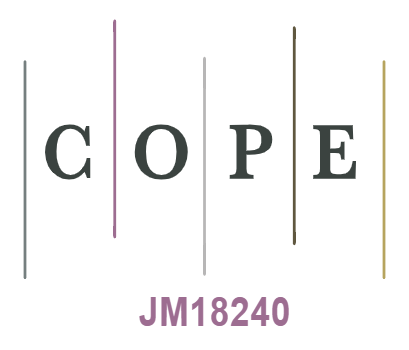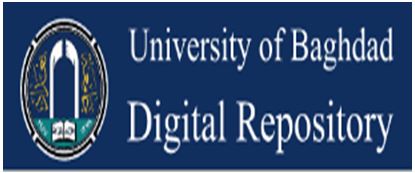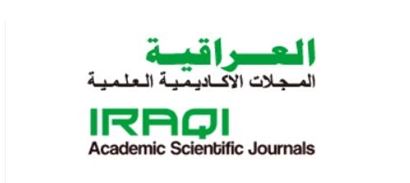Congenital Anomalies in Neonates: Findings from Six Baghdad Hospitals
DOI:
https://doi.org/10.32007/jfacmedbaghdad2462Keywords:
Birth defects; , Multiple Congenital Anomalies; , Gastrointestinal Tract; , Neural Tube Defects; , BaghdadAbstract
Background: Birth defects are the leading cause of both neonatal and post-neonatal deaths, as an estimated 240,000 neonates die in their first month of life worldwide each year. In Iraq, local studies have shown varying frequencies and types of congenital anomalies.
Objectives: To provide new insight into the incidence and types of congenital anomalies and to explore their possible risk factors in Baghdad City.
Methods: In this cross-sectional observational study, a total of 2007 neonates were enrolled from six hospitals in Baghdad during the period extending between September and December 2020. Hospital records and personal interviews were used for data collection. These data included the neonates' demographic and clinical characteristics, maternal, pregnancy, and immediate postnatal conditions. Description of the defects in those with birth defects was recorded from hospital records and as described by the parents. Statistical analysis was performed as required.
Results: There were 64 (3.2%) neonates with birth defects, i.e., an incidence of 32/1000 total births (28/1000 live births); of them, 38 (59.4%) were males, 8 (12.5%) were stillborn, 43 (66.2%) were born with a cesarean section, the majority (87.5%) had maternal age between 20 and 40 years, and 35 (54.6%) had a low birth weight and were statistically significant. In addition, reduced fetal movement, prematurity, and not receiving tonics during pregnancy were also statistically significant. Among the 64 births with congenital anomalies, multiple congenital anomalies were the most common defects [26 (40.6%)]. An isolated defect was detected in 38 (57.8%) of them. The predominant system involved was the gastrointestinal tract (GIT) [12 (18.8%)] cases, followed by the central nervous system (CNS) with 11 (17.2%) cases, and the musculoskeletal system (MS) with 6 (9.4%) cases.
Conclusion: The incidence of birth defects in Baghdad is close to global figures at 28/1000 live births with multiple congenital anomalies, gastro-intestinal, central nervous, and musculoskeletal systems defects being the most frequent, while cardiovascular, genitourinary, and skin defects being the least frequent. Possible risk factors included maternal age, drug intake, and not receiving tonics during pregnancy.
Received: Sept. 2024
Revised: Nov. 2024
Accepted: Feb. 2025
Published: April 2025
Downloads
References
1. WHO fact sheets. Congenital disorders. Feb. 27th, 2023. https://www.who.int/news-room/fact-sheets/detail/birth-defects accessed on August, 7th, 2024.
2. Zhao Y, Zhang H, Peng M, Zhou Y, Cheng X, Yang S, et al. The burden of congenital birth defects between 1990 and 2019 in China: an observational study. Front Pediatr. 2023 May 12;11:1170755. https://doi.org/10.3389/fped.2023.1170755
3. Malherbe HL, Modell B, Blencowe H, Strong KL, Aldous C. A review of key terminology and definitions used for birth defects globally. J Community Genet. 2023; 14, 241–262. https://doi.org/10.1007/s12687-023-00642-2
4. Doe J & Smith, J. Dysmorphology. In Nelson Textbook of Pediatrics: Kliegman RM & St. Geme III JW (Eds.); 21st ed. 2019; 1234-1250). Elsevier. Hardback ISBN: 9780323529501
5. Tinker SC, Gilboa S, Reefhuis J, Jenkins MM, Schaeffer M, Moore CA. Challenges in Studying Modifiable Risk Factors for Birth Defects. Curr Epidemiol Rep. 2015 Mar;2(1):23-30. https://doi.org/10.1007/s40471-014-0028-y
6. Strong K, Robb-McCord J, Walani S, Mellado C, Botto LD, Lay-Son G, et al. Action against birth defects: if not now, when? Glob Health Action. 2024 Dec 31;17(1):2354002. https://doi.org/10.1080/16549716.2024.2354002
7. Al-Hadithi TS, Al-Diwan JK, Saleh AM, Shabila NP. Birth defects in Iraq and the plausibility of environmental exposure: a review. Conflict and Health. 2012; 6: 3-10.
https://doi.org/10.1186/1752-1505-6-3
8. Agot GN, Mweu MM, Wang'ombe JK. Risk factors for major external structural birth defects among children in Kiambu County, Kenya: a case-control study. F1000Res. 2021 Feb 1;10:59. https://doi.org/10.12688/f1000research.50738.1
9. Lipinski RJ and Krauss RS. Gene-environment interactions in birth defect etiology: Challenges and opportunities. Curr Top Dev Biol. 2023; 152: 1–30. 20221114. https://doi.org/10.1016/bs.ctdb.2022.10.001
10. Crider KS, Qi YP, Yeung LF, Mai CT, Head ZL, Wang A, et al. Folic Acid and the Prevention of Birth Defects: 30 Years of Opportunity and Controversies. Annu Rev Nutr. 2022 Aug 22;42:423-452https://doi.org/10.1146/annurev-nutr-043020-091647
11. Zhiwen Li, Jiangli Di. Prevention and Control of Birth Defects in China: Achievements and Challenges[J]. China CDC Weekly. 2021, 3(37): 771-772. https://doi.org/10.46234/ccdcw2021.191
12. Zile-Velika I, Ebela I, Folkmanis V, Rumba-Rozenfelde I. Prenatal ultrasound screening and congenital anomalies at birth by region: Pattern and distribution in Latvia. Eur J Obstet Gynecol Reprod Biol X. 2023 Sep 15; 20:100242. https://doi.org/10.1016/j.eurox.2023.100242.
13. Annual statistical report. MOH 2020. Available online from 1540.pdf (moh.gov.iq) ; accessed on July 15th, 2024.
14. Annual statistical report. MOH 2019. Available online from 1349.pdf (moh.gov.iq); accessed on July 15th, 2024.
15. Alborz, A. Environmental characteristics and prevalence of birth defects among children in post-war Iraq: implications for policies on rebuilding the Iraqi education system. Medicine, Conflict and Survival. 2013; 29(1), 26-44. https://doi.org/10.1080/13623699.2013.765197
16. Ahmed RS & Mohammed RS. Assessment of uranium concentration in blood of Iraqi females diagnosed with breast cancer. Radiation and Environmental Biophysics. 2020; 60:(1)193-201. https://doi.org/10.1007/s00411-020-00881-8
17. Rubaii K. Birth Defects and the Toxic Legacy of War in Iraq. Middle East Report. 2020 Sep 1(296). accessed on July 25th, 2024. Birth Defects and the Toxic Legacy of War in Iraq. | EBSCOhost
18. Savabieasfahani M, Ahamadani BF & Damghani MA. Living near an active U.S. military base in Iraq is associated with significantly higher hair thorium and increased likelihood of congenital anomalies in infants and children. Environmental Pollution. 2020; 256,113070. https://doi.org/10.1016/j.envpol.2019.113070.
19. Al-Hamdany M. Post-war environmental pollution as a risk factor of congenital disorders in Iraq: A study review: Post-war environmental pollution as a risk factor of congenital disorders in Iraq: A study review. Iraqi National Journal of Medicine. 2020 Jan 15;2(1):1-2. https://doi.org/10.37319/iqnjm.2.1.1
20. Al-Shammari AM. Environmental pollutions associated to conflicts in Iraq and related health problems. Reviews on Environmental Health. 2016; 31:2. https://doi.org/10.1515/reveh-2015-0024
21. Busby C, Hamdan M, Ariabi E. Cancer, Infant mortality and birth sex ratio in Fallujah, Iraq 2005-2009. Int. J. Environ Res. Public Health. 2010; 7, 2828- 2837. https://doi.org/10.3390/ijerph7072828.
22. Alaani S, Savabieasfahani M, Tafash M, Manduca P. Four polygamous families with congenital birth defects from Fallujah, Iraq. Int. J. Environ Res. Public Health. 2011; 8, 89-96 .https://doi.org/10.3390/ijerph8010089
23. Al Sabbak M, Ali SS, Savabi O, Savabi G, Dastgiri S, Savabieasfahani M. Metal contamination and the epidemic of congenital birth defects in Iraqi cities. Bull. Environ. Contam. Toxicol. 2012; 89, 937-944. https://doi/10.1007/s00128-012-0817-2.
24. Summary of the prevalence of reported congenital birth defects in 18 selected districts in Iraq. Available online from: https://www.emro.who.int/images/stories/iraq/documents/congenital_birth_defects_report.pdf?ua=1. accessed on July 2024.
25. Savabieasfahani, M. Iraqi Birth Defects and the WHO Report. Class, Race and Corporate Power. 2013; 1(1): 6. https://doi.org/10.25148/CRCP.1.1.16092146.
26. Mustafa K. Khokha, Karen J. Liu, John B. Wallingford, Sally Dunwoodie, John Wallingford; Challenges and opportunities at the interface of birth defects, human genetics and developmental biology. Development 1 November 2020; 147 (21): https://doi.org/10.1242/dev.197871.
27. Kang, L., Cao, G., Jing, W., Liu J. & Liu M. Global, regional, and national incidence and mortality of congenital birth defects from 1990 to 2019. Eur J Pediatr. 2023; 182, 1781–1792. https://doi.org/10.1007/s00431-023-04865-w.
28. Naoom MB, Al-Saadi YI, Yassin BAG, Matloob HY. Congenital Anomalies among Newborns Admitted in Tertiary Hospital; Iraqi Experience. J Fac Med Baghdad. 2013;55(2):106-10. https://doi.org/10.32007/jfacmedbagdad.552636.
29. Taboo Z.A. Prevalence and Risk Factors for Congenital Anomalies in Mosul City. The Iraqi Postgraduate Medical Journal. 2012; 11(4): 458-70. https://api.semanticscholar.org/CorpusID:4952971
30. Hameed NN. Analytic Study of Congenital Malformations in Four Hospitals in Baghdad. J Fac Med Baghdad [Internet]. 2007 Apr. 1 [cited 2024 Aug. 23];49(1):32-7. Available from: https://iqjmc.uobaghdad.edu.iq/index.php/19JFacMedBaghdad36/article/view/1408.
31. AL-Janabi MK. Congenital Malformations in The West of Iraq. J Fac Med Baghdad. 2007;49(3):295-9. https://doi.org/10.32007/jfacmedbagdad.4931349
32. Mekdeci B, Schettler T. Birth Defects and the Environment. Birth Defect Research for Children. May 2004. https://birthdefects.org/peer-reviewed-analysis/.
33. Bull MJ. Down syndrome. N Engl J Med. June 2020;382(24):2344-2352. https://doi.org/10.1056/NEJMra1706537.
34. Scheuerle A, Tilson H. Birth defect classification by organ system: a novel approach to heighten teratogenic signalling in a pregnancy registry. Pharmacoepidemiol Drug Saf. 2002 Sep;11(6):465-75. https://doi.org/10.1002/pds.726
35. El Goundali K, Chebabe M, Zahra Laamiri F, Hilali A. The Determinants of Consanguineous Marriages among the Arab Population: A Systematic Review. Iran J Public Health. 2022 Feb;51(2):253-265. https://doi/10.18502/ijph.v51i2.8679.
36. World Health Organization. International Classification of Diseases (ICD). 2024. Available online from https://icdcdn.who.int/icd11referenceguide/en/html/index.html#developmental-anomalies-due-to-other-conditions. accessed on December 2024.
37. Lupo PJ, et al. Polytomous logistic regression as a tool for exploring heterogeneity across birth defect subtypes: an example using anencephaly and spina bifida. Birth Defects Res A Clin Mol Teratol. 2010;88(8):701–5. https://doi.org10.1002/bdra.20671.
38. Botto LD, et al. Seeking causes: Classifying and evaluating congenital heart defects in etiologic studies. Birth Defects Res A Clin Mol Teratol. 2007;79(10):714–27. https://doi.org/10.1002/bdra.20403.
39. Black AJ, Lu DYD, Yefet LS, Baird R. Sex differences in surgically correctable congenital anomalies: A systematic review; Journal of Pediatric Surgery. 2020; 55(5): 811-820. https://doi.org/10.1016/j.jpedsurg.2020.01.016.
40. Zhou X, Cai S, Wang H, Fang J, Gao J, Kuang H, et al. Update from a cohort study for birth defects in Hunan Province, China, 2010-2020. Sci Rep. 2023 ;13(1):20257. https://doi.org/10.1038/s41598-023-47741-1.
41. Chong Q, Ramkumar M, Hoon AK, Shunji S, Pallavi K, Georgiou HM, et al. Preterm birth update in Australasia: A report of the international symposium of Preterm Birth International Collaborative-Australasia branch. Frontiers in Pediatrics. 2022; 10. https://doi.org/10.3389/fped.2022.903546.
42. Morton A. Pregnancy complicated by eurological and neurosurgical conditions - The evidence regarding mode of delivery. Obstet Med. 2022;15(1):11-18. https://doi.org/10.1177/1753495X211000176.
43. Paudel P, Sunny AK, Gurung R., Gurung A, Malla H, Rana NB, et al. Burden and consequence of birth defects in Nepal-evidence from prospective cohort study. BMC Pediatr. 2021; 21, 81. https://doi.org/10.1186/s12887-021-02525-2.

Downloads
Published
Issue
Section
License
Copyright (c) 2025 Bassam M. Al-Musawi , Ali M. Khalid, Nadin A. Kamal, Maha Z. Muneer

This work is licensed under a Creative Commons Attribution 4.0 International License.











 Creative Commons Attribution 4.0 International license..
Creative Commons Attribution 4.0 International license..


